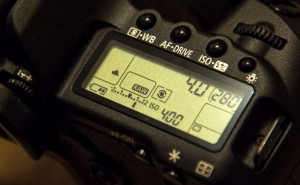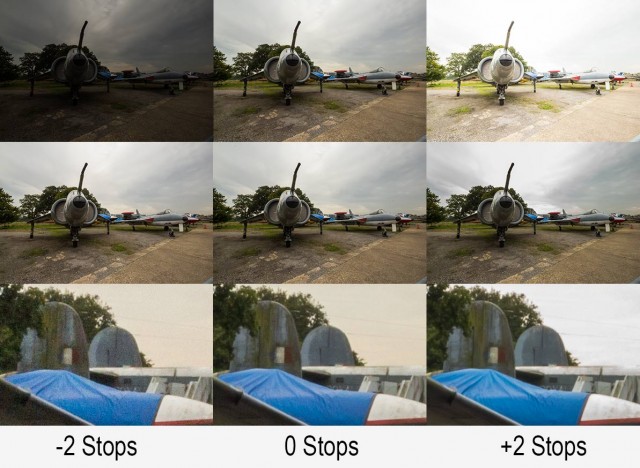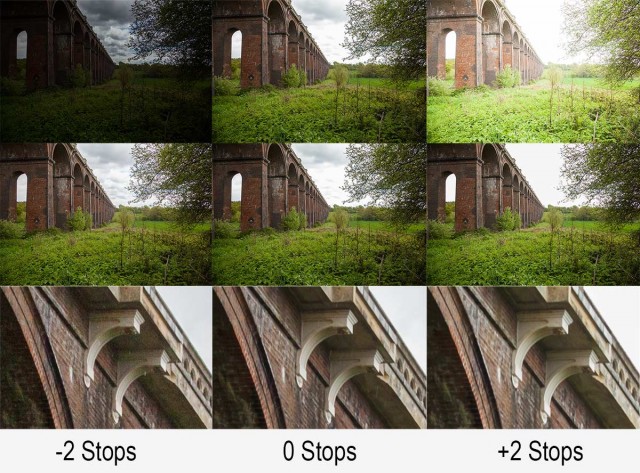Do you under or overexpose?
 It’s a question I haven’t thought much about since the days when I shot JPG images only. Now that’s a long time ago. Back then if you lost the highlights in your image you’d basically lost the image, so it was general practice to underexpose the JPG by 2/3rds of a stop from the cameras meter reading. Yes every photo was a little dark but that could be fixed in Photoshop and you still had highlight detail.
It’s a question I haven’t thought much about since the days when I shot JPG images only. Now that’s a long time ago. Back then if you lost the highlights in your image you’d basically lost the image, so it was general practice to underexpose the JPG by 2/3rds of a stop from the cameras meter reading. Yes every photo was a little dark but that could be fixed in Photoshop and you still had highlight detail.
With RAW there’s a lot more exposure latitude and worries about clipped highlights in day to day photography are almost a thing of the past. In fact there’s so much hidden image information in the highlights of a RAW file I know plenty of photographers who will deliberately over expose their images knowing they can recover it in post-production.
Why overexpose?
In a word, noise, and the theory goes something like this. Noise is very evident in the dark, shadowy areas of a photo that are made lighter when processing. But as RAW files have all this hidden highlight detail, if you start off with RAW files that are a bit too bright and make them darker, you won’t add any more noise.
Sounds crazy right? Well, believe it or not it really works… but keep reading because there’s a catch.
Take a close look at the image above, you’ll need to click it to really see what’s going on.
I shot the same scene at three different exposure (Top Row) I then brought all three RAW files into Adobe Camera RAW and edited them so they looked more or less the same (Middle Row). From a distance the three images in the middle row all look the same but a close up says otherwise (Bottom Row).
The bottom row confirms the theory. Brighten an under exposed image and they’ll be more noise evident but darken an over exposed RAW image and the noise is about the same as the correctly exposed image and may be even slightly less!
The catch
So you may be think that I’m going to say from now no you should over expose your images by a stop… well I’m not.
You see, although the lower noise is brilliant there are other things to think about.
First there’s the question of just how much highlight detail you can recover. Take a look at the photo above and you’ll see the problem. Where’s the sky gone on the right hand (overexposed) image? The correctly exposed image (middle row) struggled to keep highlight detail so over exposing is asking just a bit too much, even in RAW.
That’s not all. One stop over exposure means your shutter speed is twice as long and that could be the difference between a sharp shot and a blurred shot. You might be able to counter that by opening up the aperture if the lens / depth of field allows it and of course you could double your ISO but that rather defeats the purpose doesn’t it.
Over, under or as metered?
As is so often the case there’s no rights or wrongs that will apply to every situation and camera meters are prone to errors by design. However for me, I’m sticking to the as metered reason unless there’s a valid reason to do otherwise and I’d recommend you to do the same.













Great thinking Gavin, I guess that the subject will define the correct times to over expose if at all. Thanks for all the help over the years…..
Hi Gavin,
Nice article and good advice….Not sure if you have seen this before – it certainly made me change how I expose some shots. http://www.luminous-landscape.com/tutorials/expose-right.shtml or http://www.luminous-landscape.com/tutorials/optimizing_exposure.shtml both great articles.
I must admit I never thought too much about that but when you mentioned it the 1st thing I thought abount was the skies in a daylight shot. That said I nearly always rely on my Histogram but I do allow a little over exposure on night shots and bring it back in Lighroom or ACR so maybe subconsciously I was sometimes doing it anyway. Interesting article Gavin. Thanks for sharing.
Gavin,
Good point well made.
I totally get your overexpose to recover shadows without noise theory, but agree every situation is different.
What this theory does do is help recognise your options.
I struggle a bit with EV compensation, something I hope to work on this year.
I sense a Gavtrain video on the very subject!!
Macgeth
You have previously spoken of the benefits of HDR. With images with light extremes I say “use HDR”.
Why not in these example instances?
That’s exactly what I do but not everyone thinks the same way.
A good point made, which if I may I’d like to add to. Absolutely correct in the logic, however it still falls back into the ‘I’ll fix it in Photoshop’ school of thought, which although is perfectly valid why not strive to get the image exposed correctly in camera?
I did a job where a company employed several photographers to shoot together. I was surprised when 95% of the other photographers did not know what what or how to shoot a bracket. Which in this kind of scenario would cover all bases. Something drummed into me during film days. Perhaps something a part 2 could touch on
Hi Gavin,
Great blog, I just have one observation, you say, “One stop overexposure means your shutter speed is cut in half”.
Wouldn’t overexposing double the shutter speed, ie lengthen and not reduce?
For instance, normal exposure f/8 @ 1/125 and +1EV = f/8 @1/250.
Live long and prosper
Eddie
Well spotted Eddie. I’ve adjusted the post accordingly.
Brilliant explanation of this Gavin. Ive been playing with this for a while now. The majority of my work ive been over exposing slightly but as you said it doesn’t work every time. As I also found with a few shots that included a sky.
Cameras these days are quite clever. I shoot with a canon 6D and the iso performance is amazing so I decided to go back to metered unless the particular situation at the time of shooting dictates other wise.
A good article with some good points to consider. However, most advocates of exposing to the left would not say expose in that way always & regardless of losing important highlight detail such as clouds.
At the end of the day it’s another photography tool that in the right situation can make a very real difference if used appropriately.
Thanks for this Gavin. Great food for thought. Which brings me to a fun point – how about over AND under in the same photograph…? I’ll explain.
I photographed 350 people once, all stacked before me in rows that stretched around me in a semi-circle. I used a nodal head, took eleven shots in all. The stitch worked beautifully, except for one thing… The shot took place at 5pm mid summer so half of my circle of people were front lit, the other half were back lit. Being this was a panorama, as we all well know from Gavtrain tutorials, I had to pick one exposure to shoot all eleven photos. I exposed for the mid-level are of the group. Once back in post I nearly suffered a coronary. The brights were bright, but easily recoverable. The shadows however were REALLY dark. I thought I was ruined….
As it turned out it wasn’t my level of skill that saved the shot, but my camera. These days each brand have their strong points, and thankfully for me the one I chose is impressively strong at rendering shadow detail while producing very little noise at all. And when I say impressive, I mean really impressive. But perhaps another brand would have been different..
This makes me wonder whether shooting under the same circumstances, with another brand or model camera, would be best shot a tad under or over, like your article mentions. Perhaps one brand is stronger in the highlights, and the other in the shadows.
Food for (more) thought,
Eric
Talking of exposure, I did one of the dumbest things I have ever done in regards to photography recently. I hadn’t realised that my D7000 was on -5 exposure compensation for like two months. I was gutted when I realised what I’d done! I now check all my settings every time I turn my camera on! Doh!
G’day Gavin.
I am extremely interested in this aspect of Photography, which probably dates back to using 120 and 220 roll film photographing weddings with my RB67 twenty five years ago. We always rated the films ISO at 100, even though Kodak rated it a 160. I am still a bit of a purist, even though I have a Nikon D800e I will always use my feet first and take an incident reading of light falling on the subject and set the camera manually if I can. I also use this same sort of technique with success while shooting Chroma Key with constant lighting and rely on a Lux meter to give me an idea of light fall-off around the subject.
I am with you, I will stick to what the meter tells me unless there is some factor in there causing me to bracket exposures. I shoot in Jpeg + Raw.
Barry from Tasmania.
A very illuminating article with many valid points raised. Where Gavin does this leave us with the choice of metering modes please?
It won’t make any difference. Use whichever metering system fits your needs for the shot you’re taking.